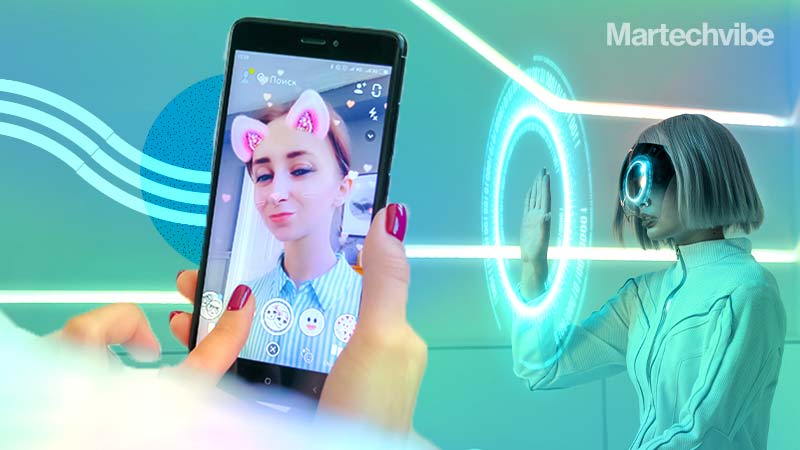Brand-Stamping Through AR filters
AR filters enable every brand to be a media company. But marketers are using it as a tool to get customers hooked to interactive content Augmented reality came into the marketing big picture in 2019 when Facebook and Instagram launched Spark AR, enabling brands to create their AR filters for free. These filters could be […]
Topics

AR filters enable every brand to be a media company. But marketers are using it as a tool to get customers hooked to interactive content
Augmented reality came into the marketing big picture in 2019 when Facebook and Instagram launched Spark AR, enabling brands to create their AR filters for free. These filters could be easily made available to the billions of social media users within a second of their launch.
These custom filters typically display the company’s logo, impose its products on your selfie, or put the brand’s characters directly into your photo. Effectively, brand identity assets are set on a social media user’s photos. Thus, every time the image is seen or shared, the brand gets leverage. This makes the AR filters an omnipotent marking tool.
Currently, Disney, Adidas, and Gucci are just some of the big names utilizing the power of social media AR filters for their brands. How have they been furthering the brand and working towards marketers’ goals? Let’s take a look.
Drive organic traffic
AR filters can take your brand to millions of people in a considerable short period. For instance, if one follower shares a filter, it reaches their followers. The pattern continues until several people have used the filter. And, if this chain prolongs, your filter could become a trend (also, if paired with an appropriate soundtrack on the Instagram reel, the chances are higher).
Examples of successful filters include Kylie Cosmetics and Adidas. American makeup mogul Kylie Jenner’s brand allows a person to try different shades of lipsticks from Kylie’s Lip Kits (like Candy K and Glitz) so consumers can decide what suits them best. Not only are these filters fun, but they are low-key promotional as they provide an immersive experience of what the product might look like. The fun element cuts the hard sell. Currently, there are more than 1.1 million reels tagged with Kylie’s lip kit filters.
Adidas’s filter does not have a utility value, but it does have an impression value. The retro filter gives a VHS look to your Instagram story that includes a pattern of the Adidas logo. This free filter does a lot of brand building – it may even take a bored customer to its page to see what’s on sale. This may be a useful quest since shopping-out-of boredom has seen growth after the pandemic. Around 26% of users reported shopping more out of boredom to online fulfillment provider Dotcom Distribution.
The ambition behind creating an AR filter is to make something that social media users will enjoy interacting with. Engaging content will bring you organic traffic. There is a danger of being too subtle. If the custom filter does not match the brand identity, it may not yield any benefits. The brand filter should build curiosity and lead the customer to your social media profile to browse.
An affordable investment
Making and promoting an Instagram or a Facebook filter costs less money. Since the investment is small, any profit will pay off. The filters do not have to go viral either, necessarily. They can simply catch the attention of the smaller influencers with their ardent followers.
For Instagram or Facebook, the filters can be created in Spark AR. This virtual studio has templates and asset libraries to create filters. Features also include advanced customizations and controls to create your unique filter.
In 2021, Snapchat formed the “Creator Hub” that teaches how to improve one’s content strategy. The hub comprises educational and informational video tutorials from popular app users on using filters, lenses, and sounds, making most of the camera. It also has tips on making the most of “Spotlight,” Snapchat’s newest entertainment platform for user-generated content.
Expand your sales funnel
A brand can create mini sales funnels across platforms to drive organic sales that are coming in because of influencers-ambassadors who use your AR filters. You can work out the four funnel steps – awareness, interest, decision, and action.
In this case, the AR filters work on the awareness quotient of the customer. The rest of the funnel works and will require your marketing time to engage with your customers.
When consumers reach the interest stage in the sales funnel, they start comparing and weighing their options. This is when your brand should pitch in spectacular content that will push them towards the decision and the action stages, in which the customer could potentially become a part of your business ecosystem.
More engagement than traditional advertising
There is no guarantee that the social media audience will see the entire video advertisement on which you spent a sizable marketing budget.
A user’s attention span is limited. According to various studies, an individual spends 2.5 seconds watching a television ad, 26 seconds watching an Instagram video, and 15-30 seconds watching an Instagram story.
AR filters are completely different in this regard. They have an average engagement rate of 75 seconds, according to AR and 3D creative platform Poplar Studio. AR filters command the viewer’s attention as opposed to passive viewing.
Conclusion
AR has certainly grown beyond being a mere new frontier in gaming. It is slowly morphing into the driving force behind sales and marketing innovations. Through AR, forward-looking businesses will be able to enhance the experience offered to their patrons, leading to increased business opportunities and sales.
If you liked reading this, you might like our other stories
Martechvibe Explains: Recommendation Engines
Is Data The Key To Customer Conversion And Acquisition?






